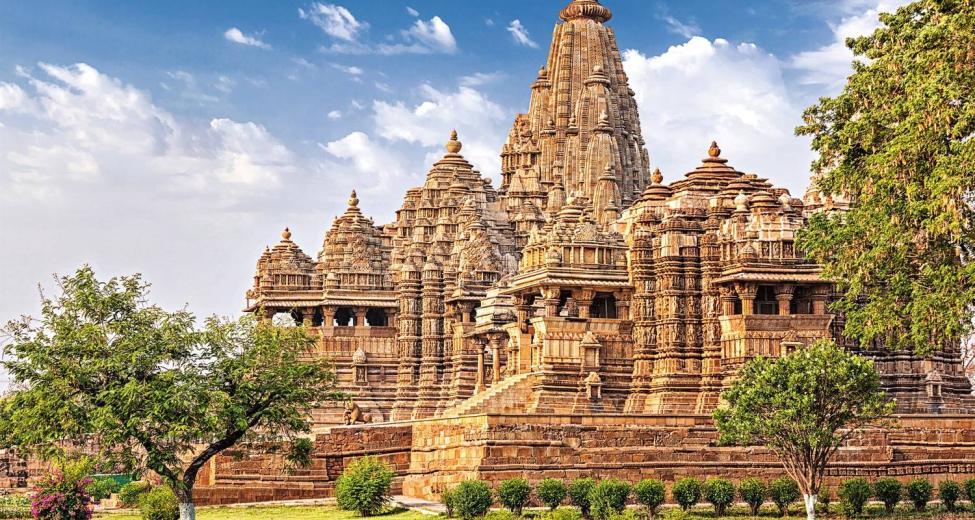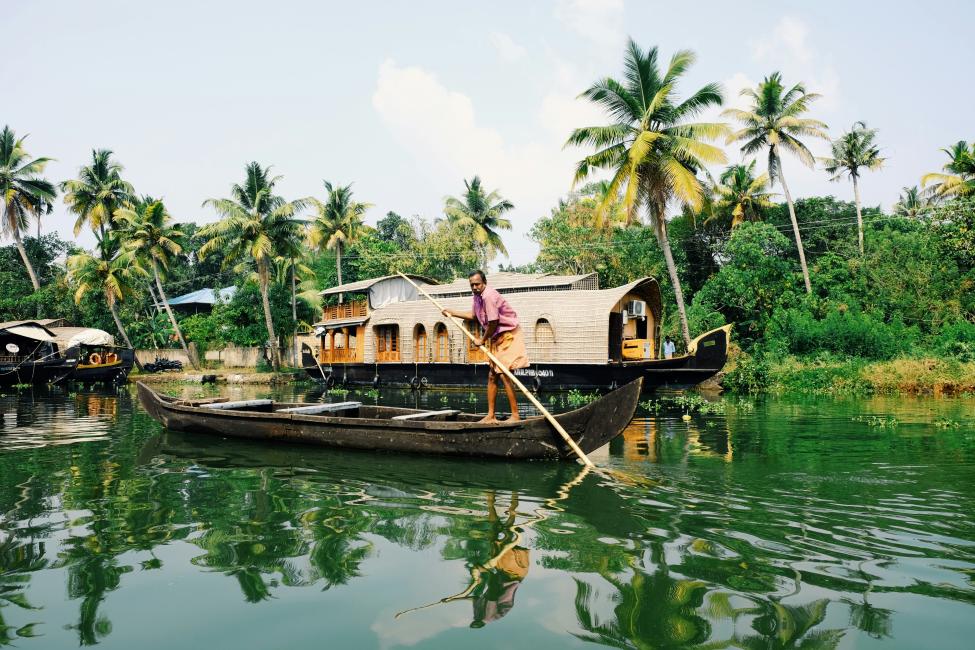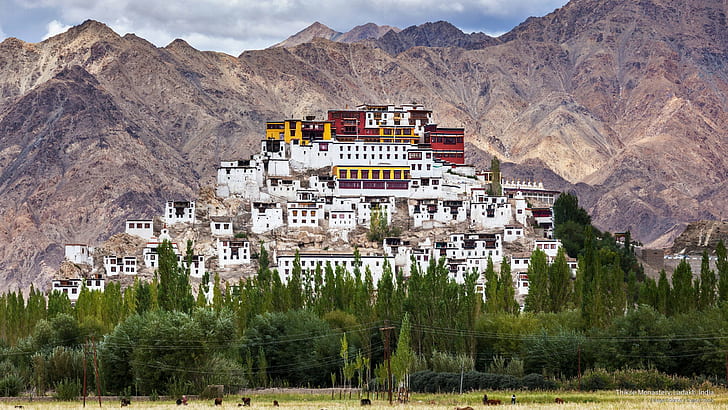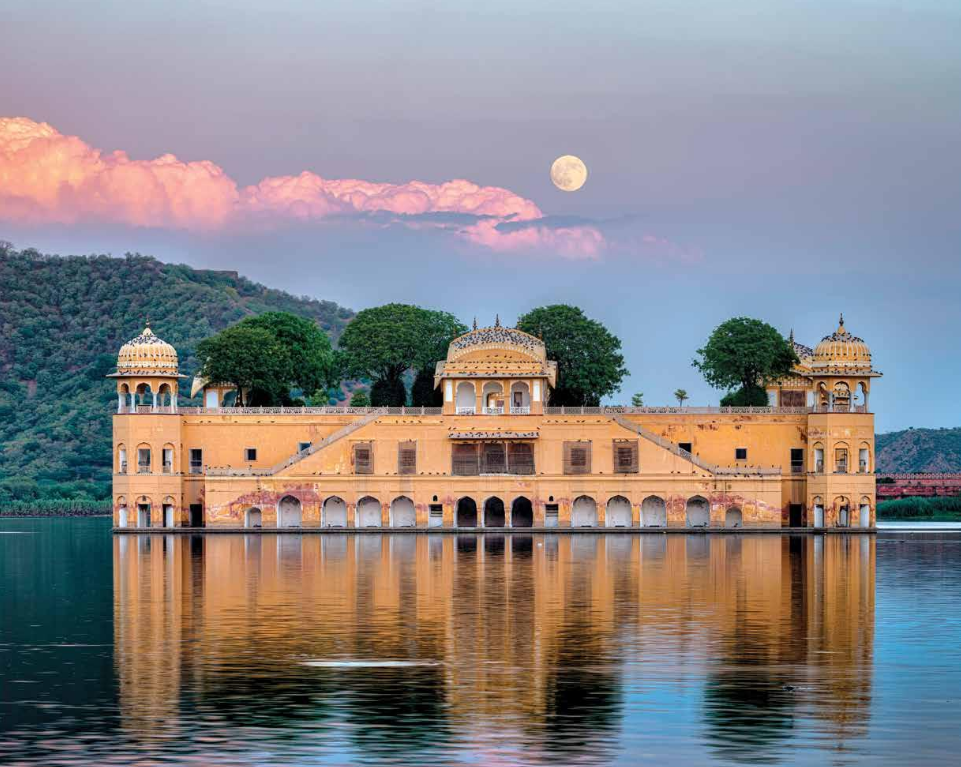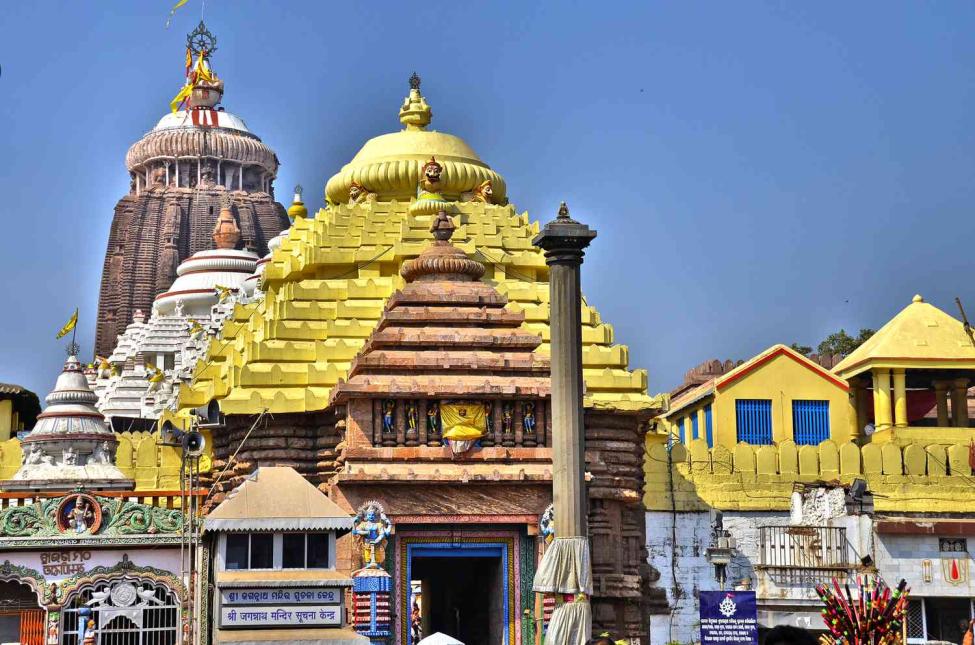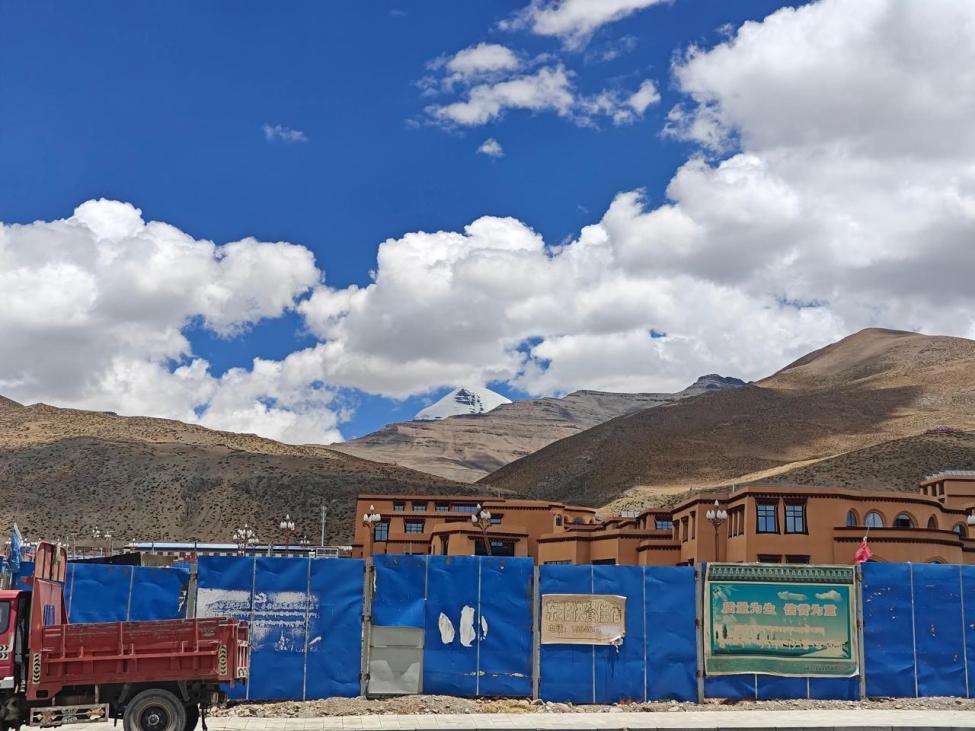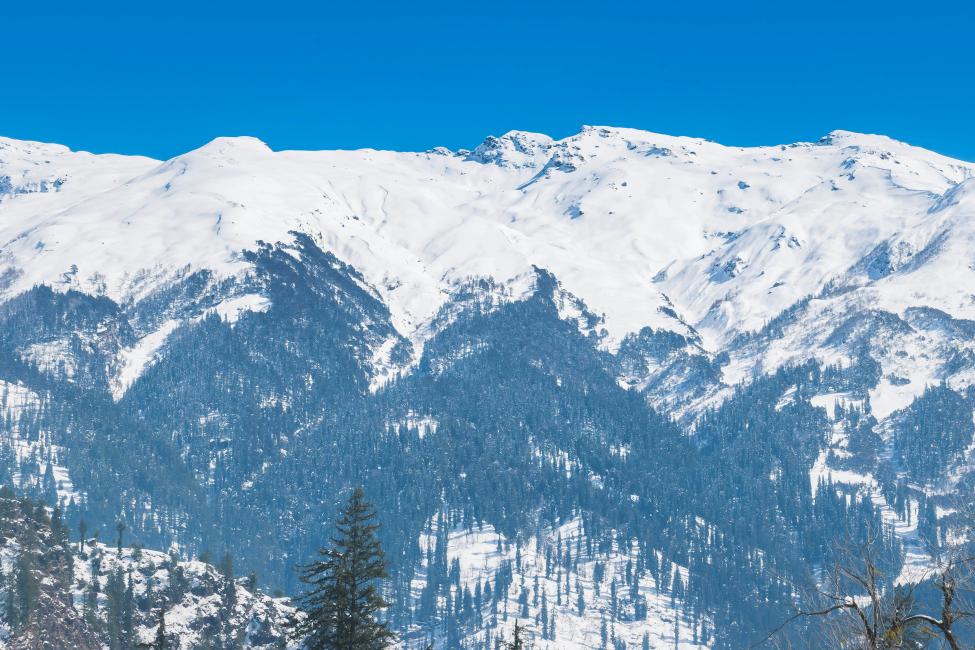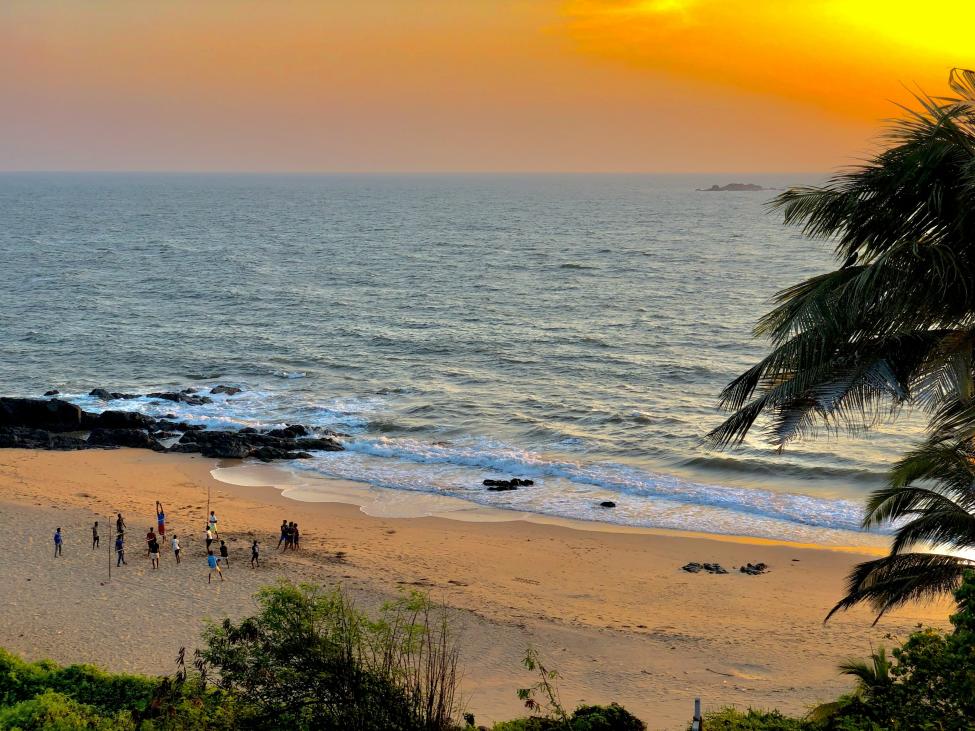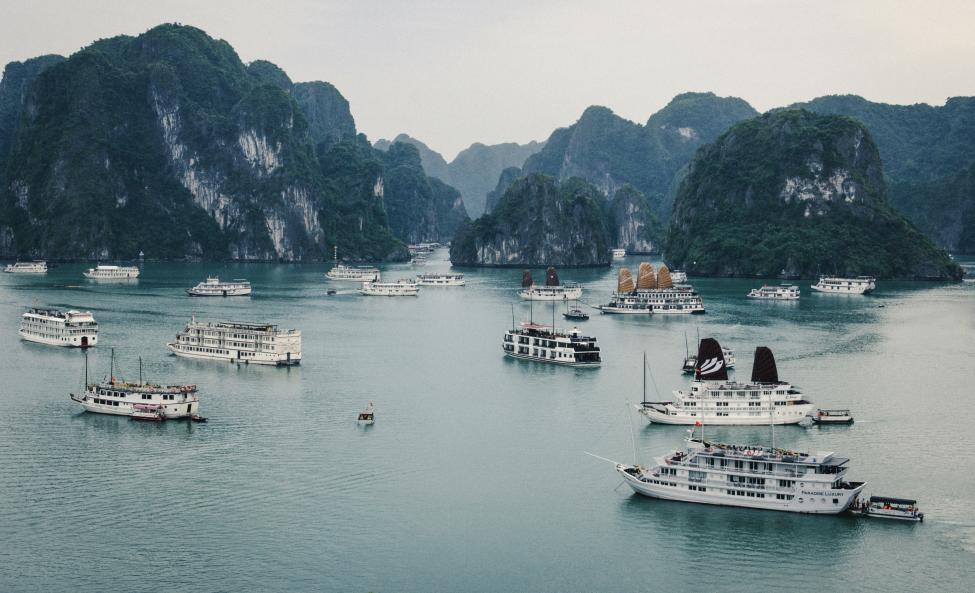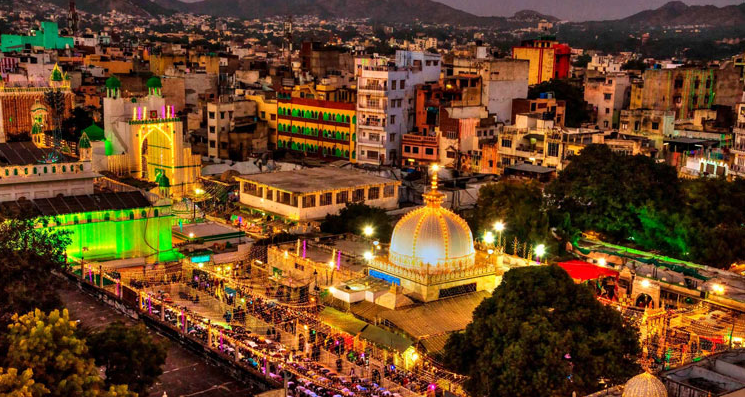 Ajmer City, Ajmer
Ajmer City, Ajmer
Ajmer: Where Spirituality Meets Heritage
Ajmer is a soulful blend of spirituality, history, and scenic beauty. From the revered Ajmer Sharif Dargah to the serene Ana Sagar Lake, the city offers a rich travel experience. Discover top attractions, cultural insights, and nearby gems like Pushkar.
Ajmer
Nestled in the heart of Rajasthan and surrounded by the Aravalli Hills, Ajmer is a city that gracefully blends spiritual depth with historic grandeur. Often overshadowed by its more famous neighbors like Jaipur or Pushkar, Ajmer holds a unique charm that appeals to pilgrims, history buffs, and casual travelers alike.
A Sacred City for All Faiths
Ajmer is best known for the revered Ajmer Sharif Dargah, the tomb of Hazrat Khwaja Moinuddin Chishti, a 13th-century Sufi saint. Each year, millions of devotees from all over the world - regardless of religion - come here to seek blessings and peace. The atmosphere at the Dargah is emotionally charged and spiritually uplifting, especially during the Urs Festival, which marks the saint’s death anniversary.
Echoes of Royalty and Rajputana Glory
Apart from its spiritual pull, Ajmer boasts an impressive historical past. The city was once ruled by the Chauhans, and later came under Mughal control. One of the city's architectural highlights is the Adhai Din Ka Jhonpra, a fascinating structure originally built as a Sanskrit college and later converted into a mosque by Qutb-ud-din Aibak. The blend of Indo-Islamic architecture is both striking and symbolic.
Nearby, the Taragarh Fort, perched on a hill, offers panoramic views of the city and a look back at medieval military architecture. Though parts of it are in ruins, the fort still whispers tales of battles and bravery.
The Tranquil Ana Sagar Lake
For those seeking calm, the Ana Sagar Lake is a must-visit. Built in the 12th century by Anaji Chauhan, the lake provides a peaceful escape with its marble pavilions, gardens, and scenic boating spots. Watching the sun dip behind the hills, reflecting over the waters, is a moment of stillness that stays with you.
A Cultural Crossroad
Ajmer’s streets bustle with colorful bazaars, where you can find traditional Rajasthani handicrafts, silver jewelry, Sufi music CDs, and fragrant attar (natural perfumes). The city is also known for its food - from spicy kachoris to sweet sohan halwa, every bite tells a story of the region’s diverse influences.
Day Trip to Pushkar
Just 11 km away, the town of Pushkar makes for a perfect day trip. Home to the Brahma Temple and the sacred Pushkar Lake, it’s a spiritual and cultural counterpart to Ajmer, known for its bohemian vibe and annual Pushkar Camel Fair.
Travel Tips:
Best time to visit: October to March (pleasant weather)
How to reach: Ajmer is well-connected by road and rail. The nearest airport is in Jaipur (130 km).
Dress modestly when visiting religious sites.
Don’t miss the qawwali performances at the Dargah in the evening.
Top Places to Visit in Ajmer
1. Khwaja Gharib Nawaz Dargah Sharif - The Soulful Heart of Ajmer
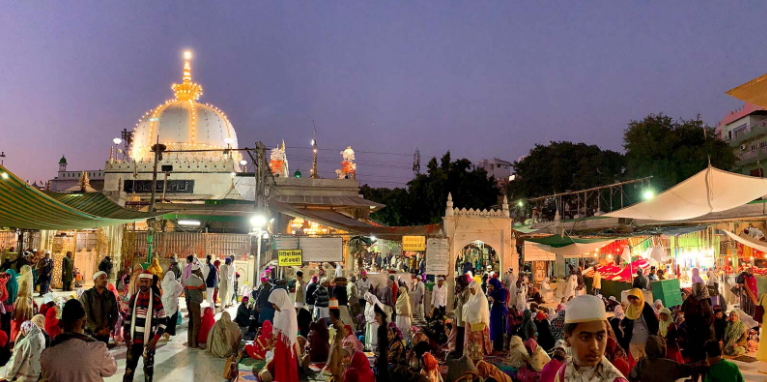
The Dargah Sharif of Khwaja Gharib Nawaz, located in the city of Ajmer, Rajasthan, is one of the most spiritually significant pilgrimage sites in India. This revered shrine houses the tomb of Hazrat Khwaja Moinuddin Chishti, a 12th-century Sufi saint whose teachings of love, peace, and service continue to draw millions of devotees from all religions and backgrounds.
The Dargah is set against the backdrop of the Aravalli hills and is surrounded by bustling lanes filled with the aroma of incense, rose petals, and soulful qawwalis that echo through the complex. Built over centuries by various rulers-including the Mughals-the shrine features white marble domes, intricately carved gates, and a peaceful courtyard where devotees gather to pray or reflect. The atmosphere is especially vibrant during Urs, the annual death anniversary of the saint, when the entire city of Ajmer lights up with spiritual energy.
One of the highlights of visiting the Dargah is attending the evening qawwali sessions, held in the Mehfil Khana, which create a deeply moving and almost transcendental experience. Devotees often offer chadars, flowers, or sweets, and many believe that sincere prayers made here are fulfilled. A short walk away is the Ana Sagar Lake, offering a peaceful spot for reflection after visiting the shrine.
- Timings: Everyday: 4:00 AM - 10:00 PM (Slight variation during festivals and religious occasions)
- Entry Fee: Free Entry (No ticket required to enter the Dargah; donations are optional)
- Location: Ajmer City, Rajasthan - approx. 2 km from Ajmer Railway Station
2. Adhai Din Ka Jhonpra - The Mysterious Mosque of Ajmer
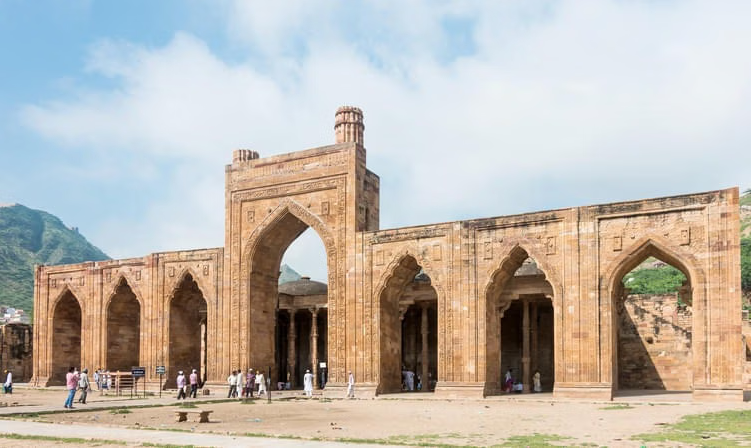
Tucked away in the vibrant town of Ajmer, Rajasthan, the ancient structure of Adhai Din Ka Jhonpra is a stunning blend of Indo-Islamic architecture and centuries-old history. This intriguing monument, whose name translates to “shed of two and a half days”, continues to captivate visitors with its grand arches, intricately carved pillars, and spiritual significance.
Originally believed to have been a Sanskrit college built during the 12th century under the rule of King Vigraharaja IV (of the Chauhan dynasty), the structure was later converted into a mosque in 1199 AD by Qutb-ud-din Aibak, the first Sultan of Delhi, under the orders of Muhammad Ghori. Despite its transformation, many Hindu and Jain architectural elements remain, especially in the carved columns and domes - making it a rare and remarkable example of cultural fusion.
The name Adhai Din Ka Jhonpra is steeped in legend. Some believe it refers to the mosque being hastily constructed in just two and a half days, while others say it symbolizes the transient nature of life – like a temporary stay in this world. The structure, though partially in ruins today, still stands tall with seven majestic arches, ornate calligraphy, and pillar carvings that whisper stories from centuries past.
- Timings: Everyday: 6:00 AM - 7:00 PM
- Entry Fee: Free Entry (No ticket required)
- Location: Ander Kote Road, near Dargah Sharif, Ajmer, Rajasthan
3. Nasiyan Jain Temple, Ajmer - A Glimpse of Jain Splendor
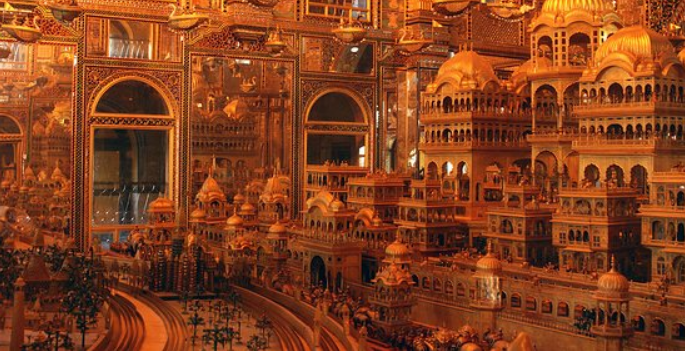
Located on Prithviraj Marg in Ajmer, Nasiyan Jain Temple, also known as Soniji Ki Nasiyan or the Red Temple, is one of the most beautiful Jain temples in India. Built in 1864 by Seth Moolchand Soni, the temple is dedicated to Lord Rishabhdev (Adinath), the first Tirthankara in Jainism.
What Makes It Special ?
The main attraction is the Swarna Nagari (City of Gold) - a two-story hall filled with gold-plated wooden models depicting Jain cosmology and the life of Lord Rishabhdev.
The temple’s red sandstone exterior, intricate carvings, and 82-foot Manastambha (pillar) make it an architectural gem.
The museum-like hall uses around 1,000 kg of gold, along with Belgian stained glass and precious stones.
- Timings: Daily from 8:30 AM - 4:30 PM
- Entry Fee: ₹10 (Indians), ₹25 (foreigners)
- Visit Duration: 30-60 minutes
- How to Reach: Just 5 km from Ajmer Railway Station and around 31 km from Kishangarh Airport. Easily accessible by local transport.
- Tip: Visit during early hours or weekdays for a peaceful experience and better photos of the golden interiors.
4. Gateways of Taragarh Fort, Ajmer
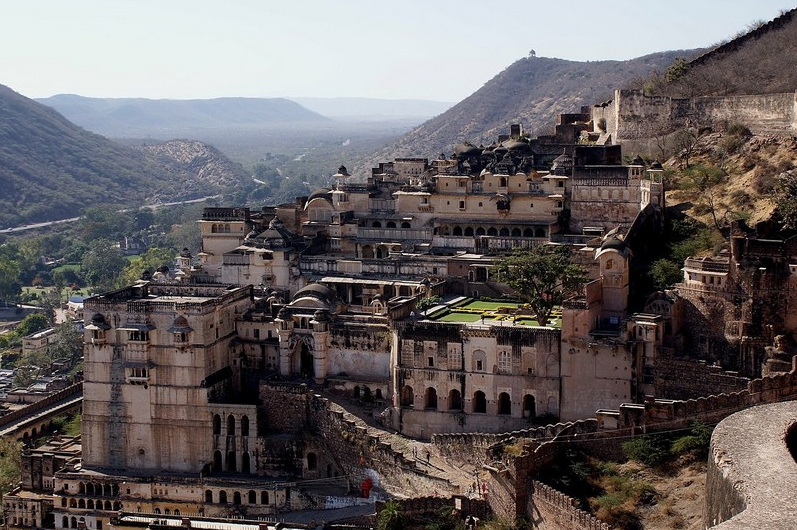
The historic Taragarh Fort of Ajmer, built in the 8th century by King Ajaypal Chauhan, is renowned for its strong gateways that once acted as the main defense points of this majestic hill fort. Perched high on a steep hill, the fort not only provides panoramic views of Ajmer city but also showcases the architectural brilliance of Rajput military design.
The gateways of Taragarh Fort are massive and robust, built with thick stone walls to withstand enemy attacks. The most significant among them is the Lakshmi Pol, a grand entrance admired for its scale and strength. Each gateway reflects the fort’s strategic importance and stands as a reminder of Rajasthan’s glorious martial past.
Though much of the fort is now in ruins, its gateways remain awe-inspiring and continue to attract history lovers and travelers alike. Exploring these gateways is like stepping back in time to witness the valor and defense strategies of Rajput rulers.
- Timings: Daily: 8:00 AM - 6:00 PM
- Entry Fee: Indians: ₹25 Foreigners: ₹200 (Additional charges may apply for cameras and guided tours.)
5. Nareli Jain Temple, Ajmer
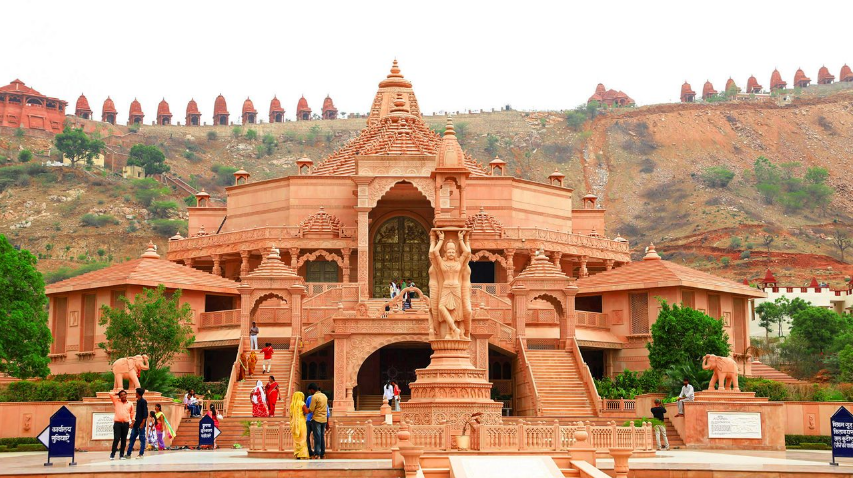
The Nareli Jain Temple, located about 7 km from Ajmer city, is a modern architectural marvel and a significant pilgrimage site for the Jain community. Situated on the outskirts along National Highway 8, this temple is dedicated to the 24 Jain Tirthankaras and beautifully combines traditional Jain design with a touch of contemporary style.
The temple is famous for its striking marble work, intricate carvings, and peaceful ambiance. Surrounding the main temple, there are 24 miniature temples, each dedicated to a different Tirthankara, spread across the Aravalli hills. The serene setting, along with its spiritual atmosphere, makes it a must-visit for both devotees and tourists.
Visitors are often captivated by the panoramic views from the temple complex, especially during sunrise and sunset, when the marble shines brilliantly under natural light. Nareli Jain Temple is not only a place of worship but also a symbol of devotion, art, and cultural heritage in Rajasthan.
- Timings: Daily: 6:00 AM - 7:00 PM
- Entry Fee: Free (No entry fee; donations are welcome).
6. Ana Sagar Lake, Ajmer
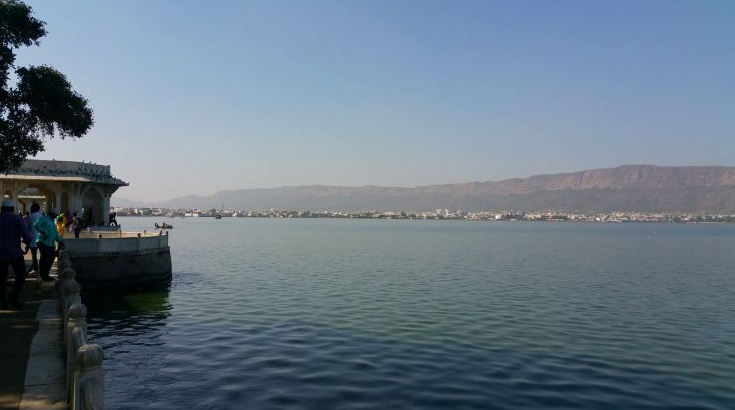
The picturesque Ana Sagar Lake is one of the most popular attractions in Ajmer, located just 1.5 km from the city center. This man-made lake was built in the 12th century by Anaji Chauhan, the grandfather of the legendary king Prithviraj Chauhan. Spread across 13 km², the lake offers a serene escape from the city’s hustle and bustle and is a favorite spot for both locals and tourists.
Surrounded by lush gardens and marble pavilions built by the Mughal emperors, Ana Sagar Lake is an ideal place to relax and enjoy panoramic views of the Aravalli Hills. The Daulat Bagh Gardens, developed by Emperor Jahangir, and the beautiful Baradari marble pavilions constructed by Shah Jahan, add charm to this historic lake.
Visitors can enjoy peaceful boat rides, evening walks along the embankment, and breathtaking sunsets that reflect over the sparkling waters. The lake is especially vibrant during the winter season, when migratory birds flock to the area, creating a delightful sight for nature lovers.
- Timings: Daily: 8:00 AM - 8:00 PM
- Entry Fee: Free Entry to the lake area and gardens
- Separate charges for boating (₹50 - ₹100 depending on type of boat)
7. Birla City Water Park, Ajmer

The Birla City Water Park in Ajmer is one of the largest and most popular water parks in Rajasthan, offering the perfect getaway for families, friends, and thrill-seekers. Spread across a vast area, the park features a wide range of exciting water rides, slides, and pools designed for all age groups.
From adventurous rides like high-speed water slides and wave pools to relaxing options like the lazy river and family pools, the park ensures a fun-filled experience for everyone. It also has a dedicated kids’ zone with smaller slides and water activities, making it a complete entertainment package.
Apart from water rides, Birla City Water Park also offers rain dance floors, music, and delicious food stalls to keep visitors refreshed and energized throughout the day. Its vibrant atmosphere and modern facilities make it a top attraction in Ajmer, especially during the summer months.
- Timings: Daily: 11:00 AM - 6:00 PM
- Entry Fee: Adults: ₹400 per person & Children (below height limit): ₹300 per person (Prices may vary on weekends, holidays, or peak seasons.)
8. Foy Sagar Lake, Ajmer
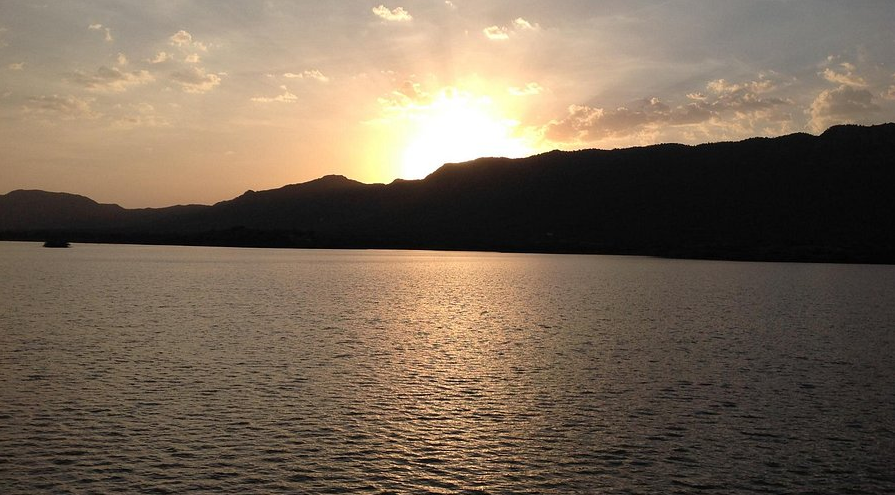
The scenic Foy Sagar Lake, located about 5 km from Ajmer city, is a charming artificial lake built in 1892 by the British engineer Mr. Foy. Originally constructed as a famine relief project, the lake has now become one of Ajmer’s most peaceful and picturesque attractions.
Spread across a large area, Foy Sagar Lake is famous for its calm waters, lush surroundings, and breathtaking views of the Aravalli Hills. It is particularly popular during the winter months, when migratory birds can be spotted around the lake, making it a delightful spot for birdwatchers and nature lovers.
The lake also offers mesmerizing sunset views, with the golden rays reflecting beautifully on the still waters. Unlike the busier Ana Sagar Lake, Foy Sagar Lake is quieter and less crowded, making it an ideal destination for those seeking peace and relaxation.
- Timings: Daily: 9:00 AM - 6:00 PM
- Entry Fee: Free (No entry fee; visitors may incur minimal charges for parking or local facilities).
9. Ajmer Government Museum
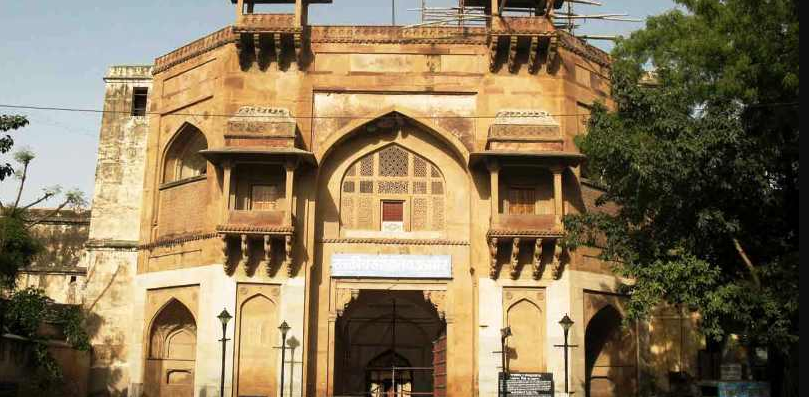
The Ajmer Government Museum, located inside the historic Akbari Fort in Ajmer, is one of the city’s most fascinating cultural attractions. Established in 1908 by Lord Curzon, the museum showcases a rich collection of artifacts that highlight the glorious history and heritage of Rajasthan.
The museum houses rare sculptures, medieval weapons, miniature paintings, inscriptions, coins, and manuscripts belonging to the Chauhan dynasty as well as the Mughal and Rajput eras. Its galleries are divided into sections, each displaying unique treasures - from stone carvings and armor to ancient coins and art pieces.
The Akbari Fort, where the museum is located, was once the residence of Prince Salim (later Emperor Jahangir). The combination of its historical setting and the museum’s valuable exhibits makes it a must-visit destination for history enthusiasts, students, and researchers.
- Timings: Tuesday to Sunday: 10:00 AM - 4:30 PM (Closed on Mondays and Public Holidays).
- Entry Fee: Indians: ₹10 per person, Foreigners: ₹50 per person and Students (with ID): ₹5 per person
- Visiting the Ajmer Government Museum is like stepping back in time, offering a deep insight into Rajasthan’s cultural and historical legacy.
10. Akbar’s Palace & Museum, Ajmer
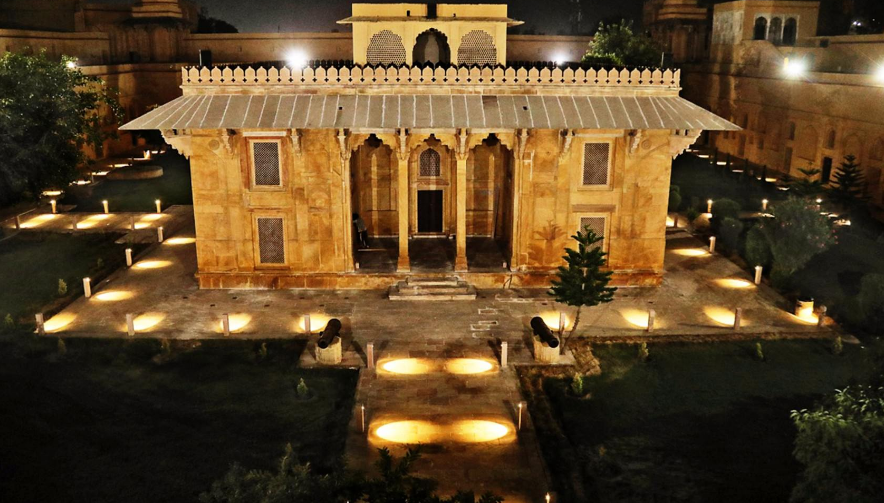
The historic Akbar’s Palace, built in 1570 by the Mughal Emperor Akbar, is one of the most significant monuments in Ajmer. Constructed as a royal residence for Akbar and later used as a military base, this palace holds great historical importance. It is also famously known as the place where Prince Salim (later Emperor Jahangir) stayed and issued the farman permitting the British East India Company to trade in India.
Today, the palace houses the Ajmer Government Museum, established in 1908, which displays a remarkable collection of artifacts from the Mughal and Rajput eras. Visitors can explore sculptures, miniature paintings, manuscripts, inscriptions, coins, weapons, and armor, offering a deep insight into Rajasthan’s glorious heritage.
The palace itself is an architectural gem, built with red sandstone and designed in typical Mughal style, with massive gates and strong fortifications. The museum inside adds cultural and historical depth, making it a must-visit for history lovers, researchers, and tourists.
- Timings: Tuesday to Sunday: 10:00 AM - 4:30 PM (Closed on Mondays and Public Holidays)
- Entry Fee: Indians: ₹10 per person, Foreigners: ₹50 per person and Students (with valid ID): ₹5 per person
11. Daulat Bagh Garden, Ajmer
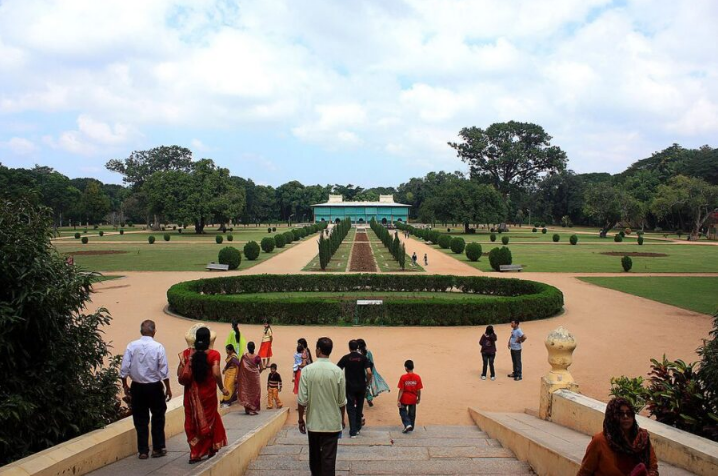
The serene Daulat Bagh Garden is a beautiful garden located near Ana Sagar Lake in Ajmer. Built during the Mughal era by Emperor Jahangir, the garden is an exquisite example of Mughal landscaping, featuring well-laid pathways, lush green lawns, flowering plants, and decorative fountains.
Visitors can enjoy peaceful strolls along the garden’s pathways while taking in panoramic views of Ana Sagar Lake and the surrounding Aravalli Hills. The garden also has marble pavilions that were used by the Mughal emperors to relax and enjoy the scenic beauty. Its tranquil environment makes it an ideal spot for photography, picnics, and leisurely evenings.
Daulat Bagh Garden is not only a place of natural beauty but also a site of historical significance, reflecting the rich cultural heritage of Ajmer and the grandeur of Mughal architecture.
Timings: Daily: 8:00 AM - 7:00 PM
Entry Fee: Free (No entry fee; only minimal charges may apply for parking or boating at nearby Ana Sagar Lake)
12. Victoria Jubilee Clock Tower, Ajmer
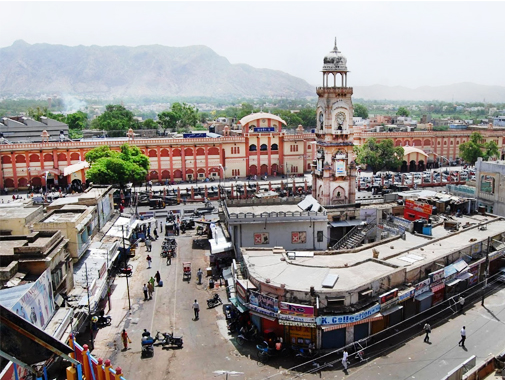
The Victoria Jubilee Clock Tower is one of Ajmer’s notable landmarks, built in 1901 to commemorate the 60th year of Queen Victoria’s reign. Located in the heart of Ajmer city near the bustling market area, the clock tower is a blend of colonial architecture and local craftsmanship, making it a prominent historical monument.
Standing tall with its intricate design and elegant structure, the tower not only serves as a timepiece but also as a symbol of the city’s colonial past. It has become a popular spot for photography, local sightseeing, and learning about Ajmer’s history during the British era. The area surrounding the clock tower is lively, with shops, eateries, and markets, giving visitors a taste of Ajmer’s local culture.
- Timings: Daily: Open 24 Hours (Accessible from outside; no guided tours inside)
- Entry Fee: Free (No entry fee; visitors can explore the area around the tower freely)
13. Sai Baba Temple, Ajmer
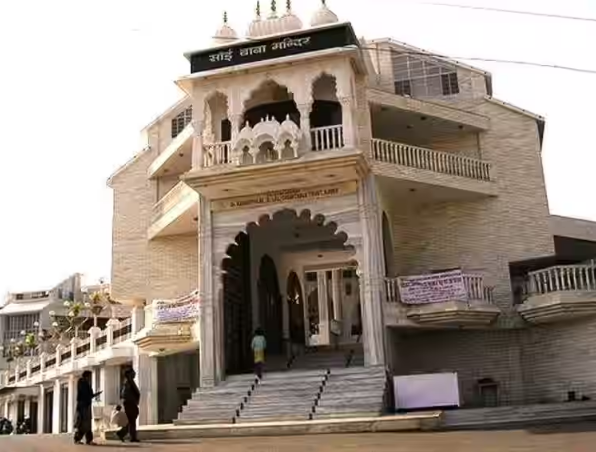
The Sai Baba Temple in Ajmer is a peaceful and spiritually uplifting place dedicated to Shirdi Sai Baba, attracting devotees from across Rajasthan and beyond. Located conveniently in the city, the temple is known for its serene atmosphere, beautiful architecture, and devotional activities.
The temple features a spacious prayer hall, vibrant murals depicting the life of Sai Baba, and beautifully maintained surroundings that allow visitors to meditate and seek blessings. Daily aarti ceremonies and bhajans create a spiritually enriching experience, making it a popular destination for both devotees and tourists.
Visitors often combine their visit to Sai Baba Temple with nearby attractions in Ajmer, making it a perfect spiritual stop while exploring the city.
- Timings: Daily: 5:00 AM - 9:00 PM
- Entry Fee: Free (No entry fee; donations are welcome)
14. Prithviraj Smarak, Ajmer
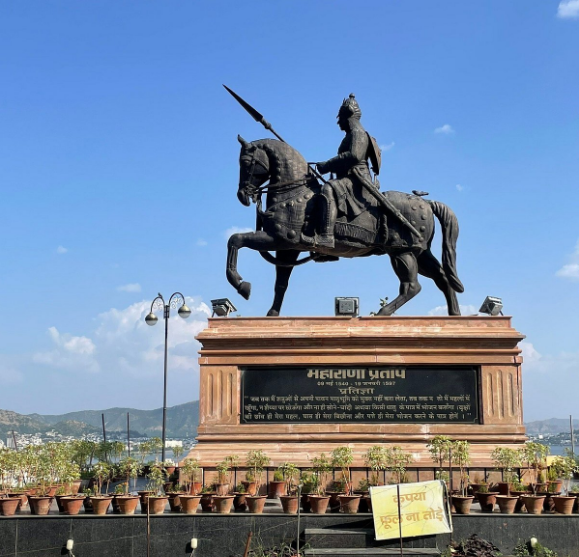
The Prithviraj Smarak in Ajmer is a historic monument dedicated to the legendary Rajput king Prithviraj Chauhan, known for his bravery and leadership in the 12th century. Situated on Taragarh Road, the memorial honors his legacy and offers visitors a glimpse into Rajasthan’s rich martial history.
The centerpiece of the Smarak is a black stone statue of Prithviraj Chauhan on horseback, with his bow raised, symbolizing valor and courage. Perched atop a hill, the site provides panoramic views of Ajmer city and the surrounding Aravalli Hills, creating a peaceful and scenic environment for visitors.
This memorial is ideal for history enthusiasts, students, and tourists interested in Rajput heritage and medieval India. The serene surroundings also make it a popular spot for photography and leisurely walks.
- Timings: Daily: 6:00 AM - 9:00 PM
- Entry Fee: ₹10 per person
Visiting the Prithviraj Smarak, Ajmer allows travelers to pay tribute to one of India’s most celebrated kings while enjoying scenic views and learning about the region’s historic past.
15. Buland Darwaza, Ajmer
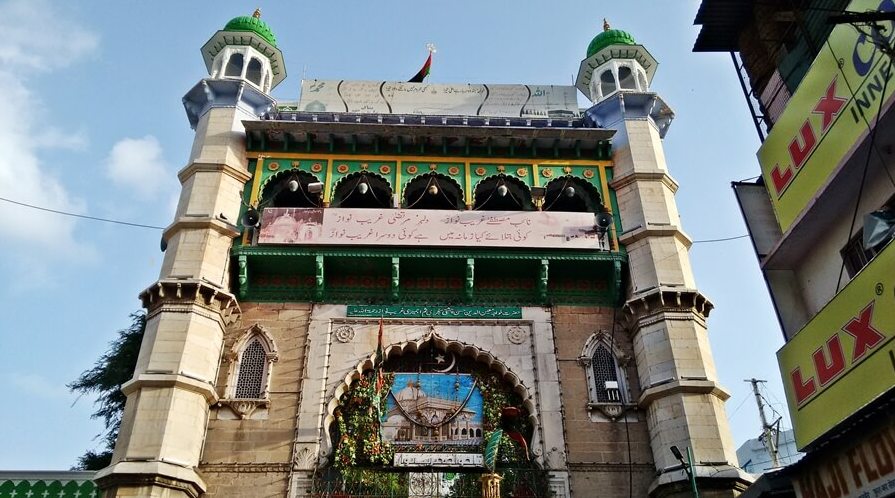
The Buland Darwaza, also known as the “Gate of Magnificence,” is one of the most iconic entrances in Ajmer, leading to the Ajmer Sharif Dargah. Built during the Mughal era, this monumental gateway is a stunning example of Mughal architecture, adorned with intricate carvings, inscriptions, and elegant arches.
Standing tall and majestic, the Buland Darwaza symbolizes the grandeur and spiritual significance of the shrine it leads to. Visitors are often awed by its sheer scale and detailed craftsmanship, which reflects the rich heritage of Rajasthan and the Mughal influence in the region. The gateway is not only a passage to the sacred dargah but also a historical landmark, attracting photographers, history enthusiasts, and devotees alike.
- Timings: Daily: 5:00 AM - 9:00 PM
- Entry Fee: Free (No entry fee; donations are welcome at the dargah)
A visit to the Buland Darwaza, Ajmer offers a perfect blend of architectural splendor and spiritual experience, making it a must-see landmark in the city.

 Laxmi Vilas Palace: A Glimpse In..
Laxmi Vilas Palace: A Glimpse In.. Phalgu River, Gaya - The Sacred ..
Phalgu River, Gaya - The Sacred .. Karol Bagh Market Delhi - Shoppi..
Karol Bagh Market Delhi - Shoppi.. Discover Porbandar: The Birthpla..
Discover Porbandar: The Birthpla.. Fatehpuri Masjid Delhi – Histo..
Fatehpuri Masjid Delhi – Histo.. Best Places to Visit in Shimla, ..
Best Places to Visit in Shimla, .. Jim Corbett National Park Travel..
Jim Corbett National Park Travel.. Jantar Mantar Delhi - History, T..
Jantar Mantar Delhi - History, T.. Raj Ghat Delhi - Mahatma Gandhi ..
Raj Ghat Delhi - Mahatma Gandhi .. Anandpur Sahib: The Spiritual & ..
Anandpur Sahib: The Spiritual & .. Crafts Museum, Delhi | History, ..
Crafts Museum, Delhi | History, .. Select Citywalk Mall Delhi – S..
Select Citywalk Mall Delhi – S.. Har Ki Pauri Haridwar | Complete..
Har Ki Pauri Haridwar | Complete.. Top 5 Places to Visit in Haridwa..
Top 5 Places to Visit in Haridwa.. Prag Mahal - The Gothic Wonder o..
Prag Mahal - The Gothic Wonder o..

